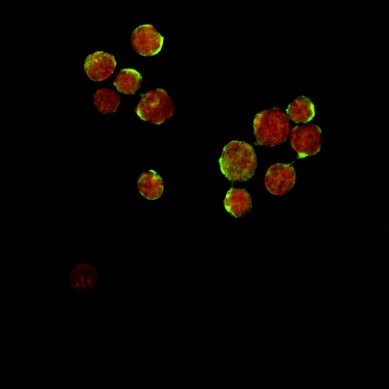Mechanism of haematopoietic stem cell expansion may help to treat diseases
|
Research published recently in the journal Nature sheds light on the means by which haematopoietic stem cells (HSCs) derived from umbilical cord blood may become more applicable for adult regenerative therapies. The study, led by principal investigator Dr. Kristin Hope, found that the RNA-binding protein Musashi-2 leads to an increase in the number of cord blood HSCs.
Umbilical cord blood as a source of regenerative cells |
|
Umbilical cord blood-derived HSCs have shown promise to treat a variety of diseases of the blood and immune system; however, in clinical reality, the small number of HSCs found in cord blood has limited their use. Due to the accessibility of umbilical cord blood, its use as a source of HSCs is desirable. This recently published work sheds light on controlling the growth and expansion of umbilical cord blood cells, which would increase the numbers of these therapeutically important cells. Dr. Hope, an investigator at the Stem Cell and Cancer Research Institute and assistant professor in the Department of Biochemistry and Biomedical Sciences at McMaster University, collaborated with scientists from the University of Toronto, the University of Montreal and the University of California, San Diego for this research.
Previous research in the field has identified important transcription factor networks that are instrumental in HSC self-renewal. This work looked at post-transcriptional mechanisms, finding that when the RNA-binding protein Musashi-2 was overexpressed, both a short-term and long-term increase in the number of HSCs occurred ex vivo. Thus, multiple layers of gene regulation are involved in the expansion of HSCs. According to Dr. Hope, “With this newfound ability to control over the regeneration of these cells, more people will be able to get the treatment they need.” |
 Photo credit: McMaster University |
|
Toward a treatment and cure
This research is good news to the hundreds of thousands of people worldwide suffering from diseases such as sickle cell anemia and blood cancers. The ability to increase the number of HSCs in an umbilical cord blood sample will enable more samples to be used for transplants and therapeutics. Dr. Hope explains in a release, “Providing enhanced numbers of stem cells for transplantation could alleviate some of the current post-transplantation complications and allow for faster recoveries.”
Do you work in this area of research? Check out our available stem cell and cancer research tools. |



